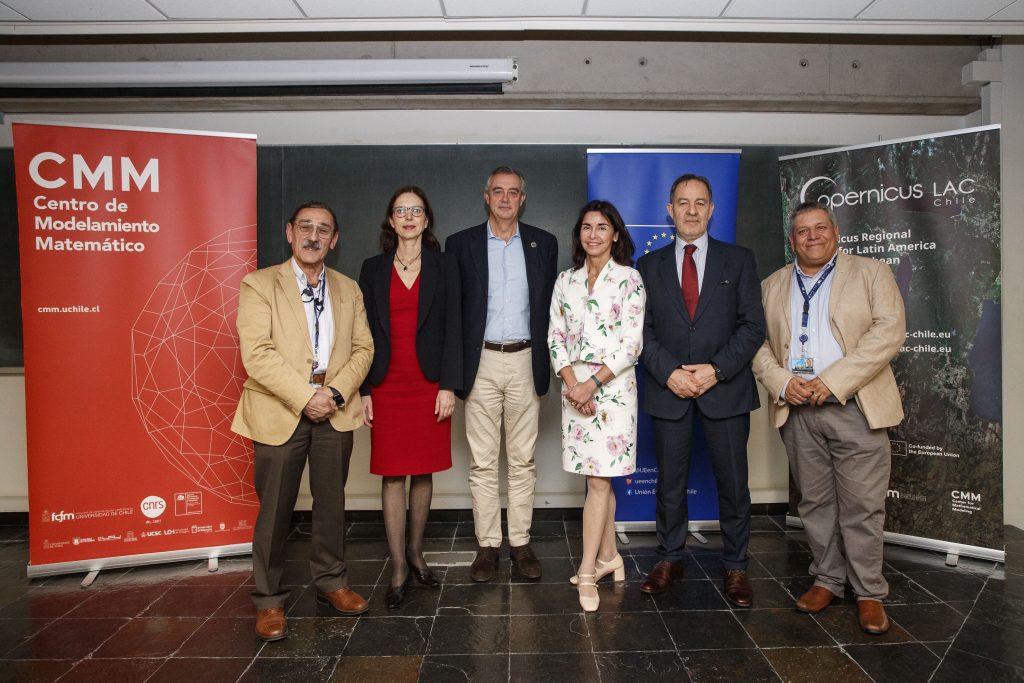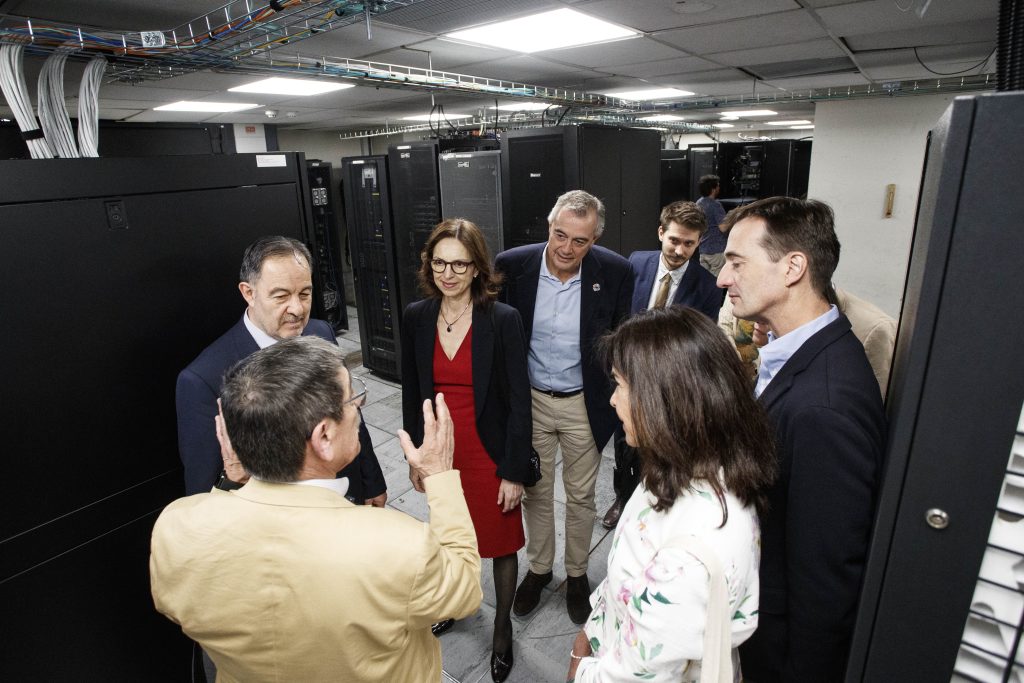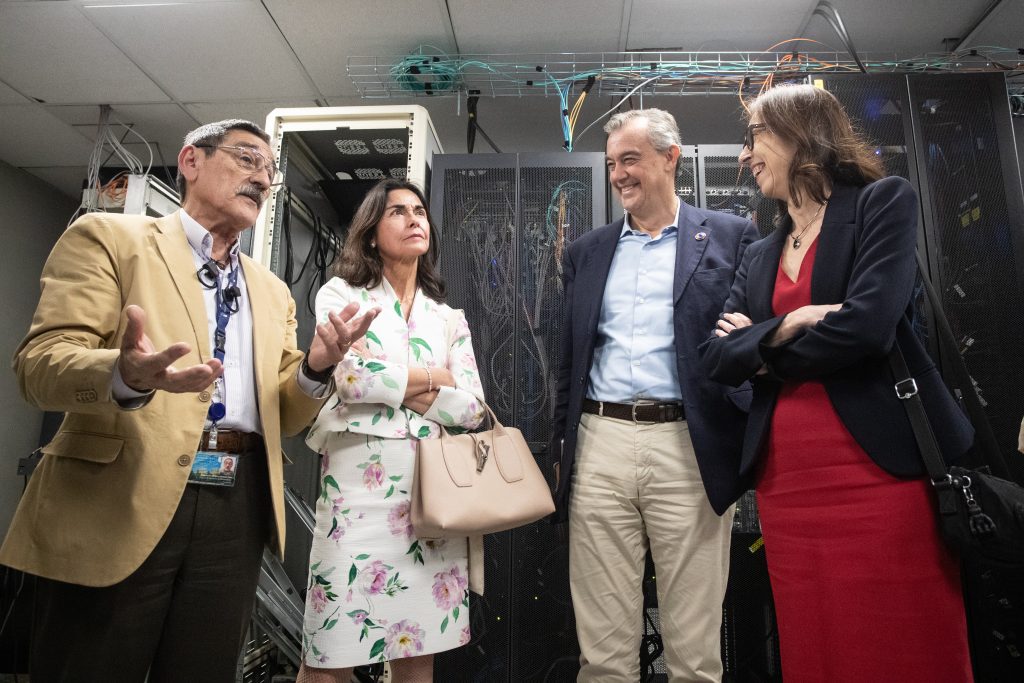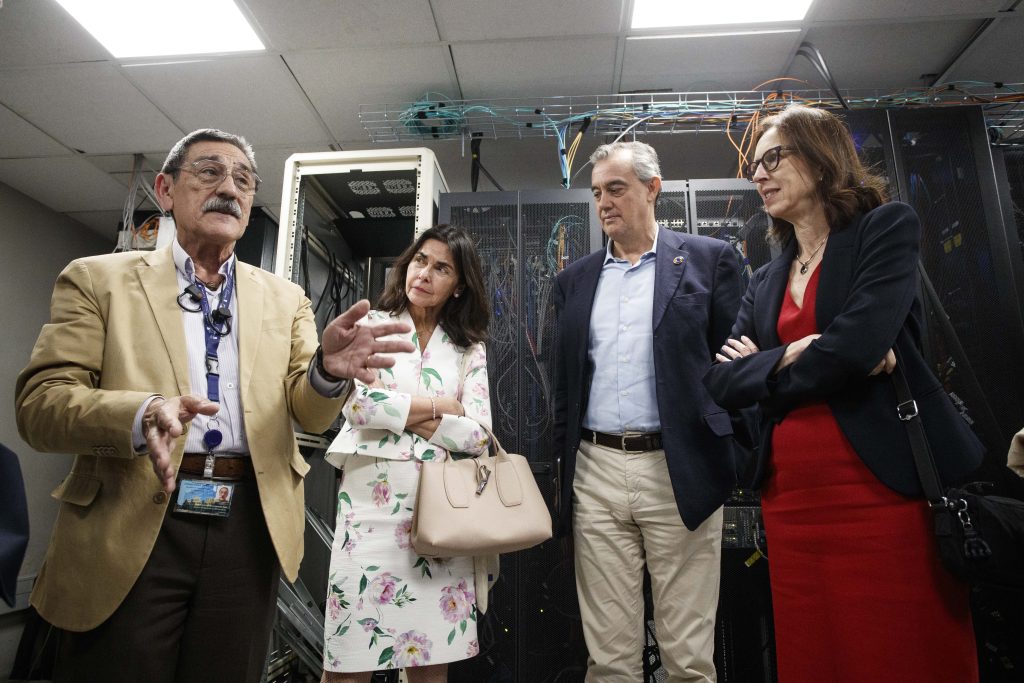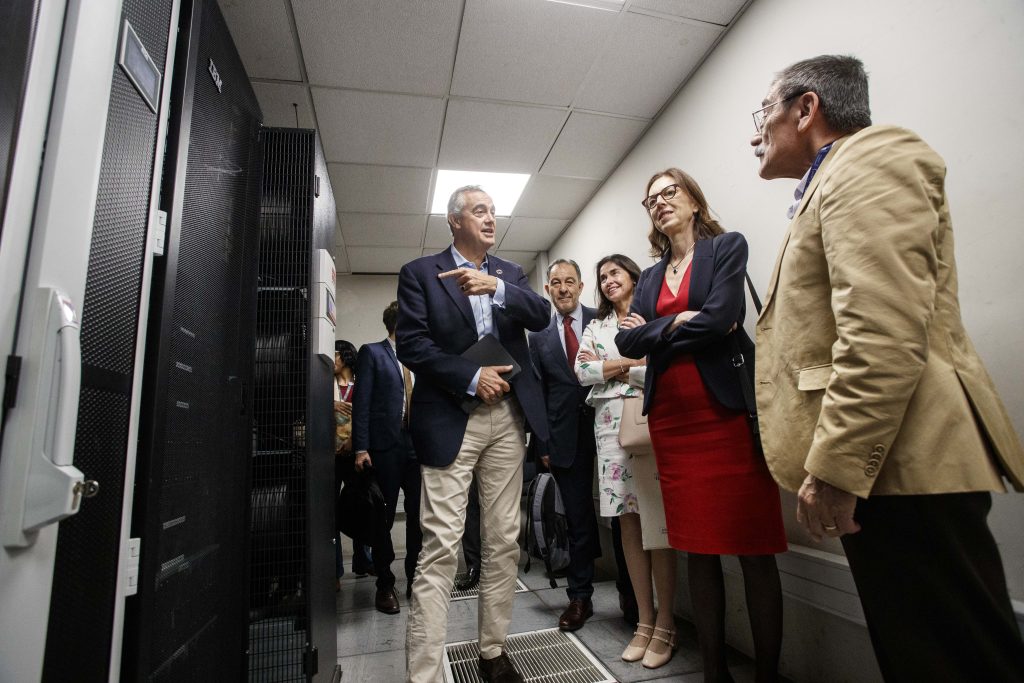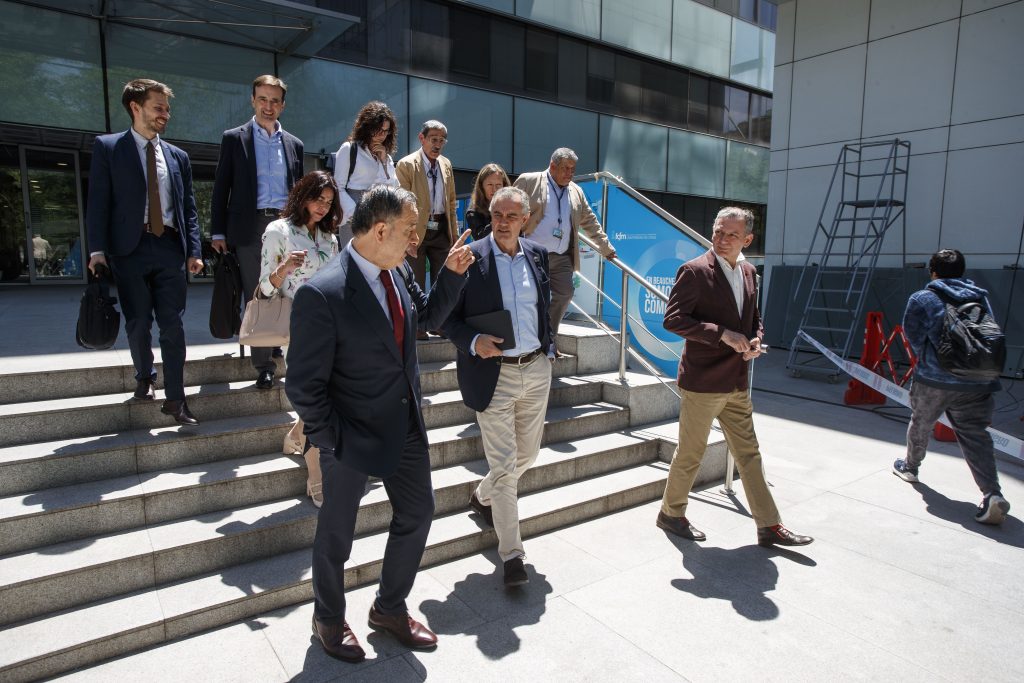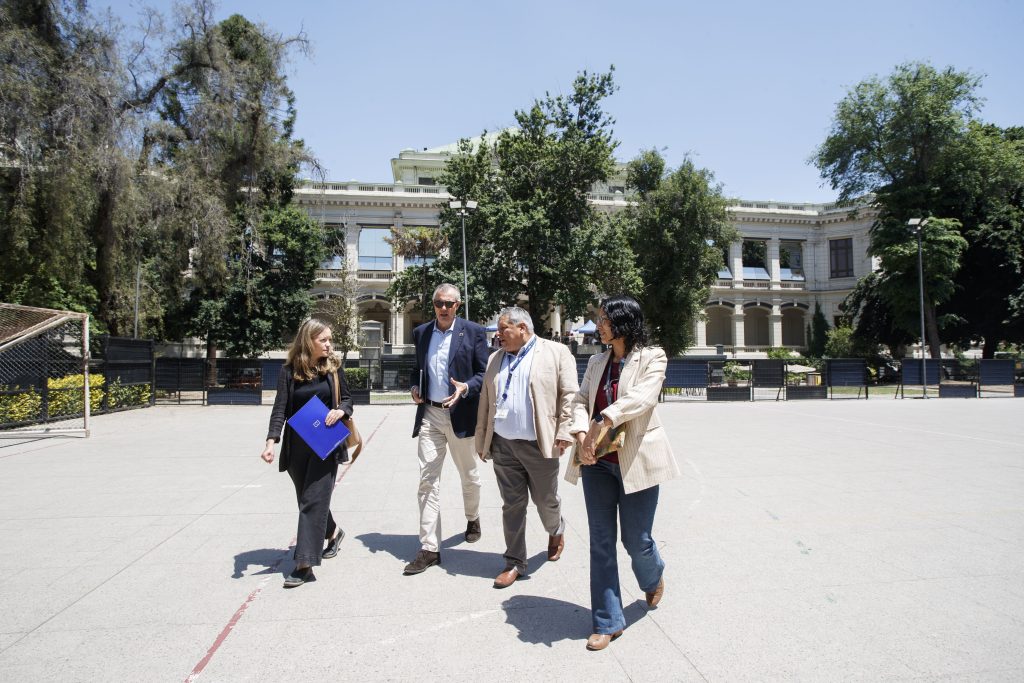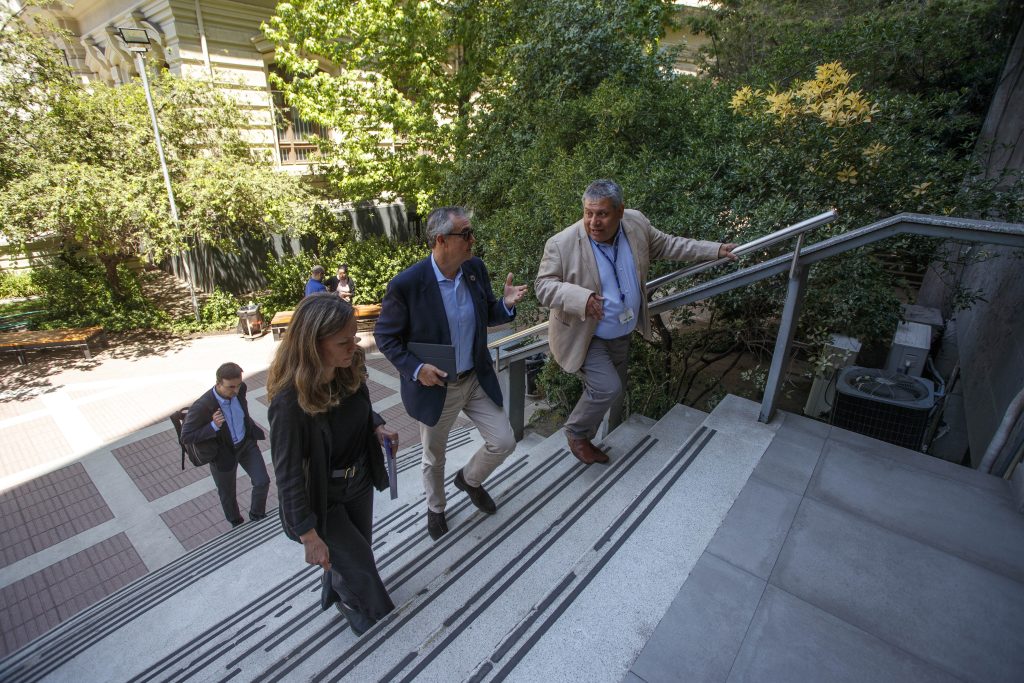The Regional Center, hosted at the CMM, has already made two of the three satellite tools from the European Earth Observation Program operational.
The Director for Latin America and the Caribbean of the European Union’s Directorate-General for International Partnerships (DG INTPA), Félix Fernandez Shaw; the EU Ambassador to Chile, Claudia Gintersdorfer; and Chile’s Ambassador to the European Union in Belgium and concurrent to Luxembourg, Gloria Navarrete, led the delegation that, on Wednesday, November 6, visited the Center for Mathematical Modeling (CMM) at the University of Chile to learn in detail about the functioning of the Copernicus Regional Center for Latin America and the Caribbean (CopernicusLAC Chile).
In March 2023, the EU and the University of Chile officially launched the joint project, which is part of the new Digital Alliance. A year and a half later, the Earth Observation initiative has already made two free services available to the public in Latin America and the Caribbean: Land Cover and Use Maps, and the Urban Atlas. The Coastal Monitoring Service will be available by early 2025.
Florencio Utreras, Director of CopernicusLAC Chile, outlined the infrastructure procurement processes, energy expenditure, the water cooling system implemented by the University of Chile, and the collaborative agreements established with countries in Latin America and the Caribbean. He also announced that an online image repository would be operational by April, and an image processing service for LAC users would launch in May.
Meanwhile, Jaime Ortega, the project’s scientific director and principal researcher at CMM, explained the functionality of the tools already available and announced specific work to address the Caribbean’s sargassum issue. This marine algae has proliferated massively along the coasts of Central America and the Caribbean in recent years, becoming an environmental problem for the region.
Satellite Images for the World
Following the presentations by Utreras and Ortega, the authorities visited the University of Chile’s Data Center, where CopernicusLAC Chile’s racks will soon be hosted, alongside Chile’s Supercomputer (NLHPC), another flagship CMM project.
“I believe it is essential for Chile to work with the European Union, and especially to have the opportunity to leverage Copernicus, which is a public, open-access service funded by the EU. Adding to this are the supercomputer, the work with the Bella cable, and so on. With Chile, we have all the elements to enable Latin America and the Caribbean to use the most advanced technology for their development,” said Félix Fernandez Shaw, Director for Latin America and the Caribbean of the European Union.
EU Ambassador to Chile, Claudia Gintersdorfer, added: “Copernicus is one of the four components of the Digital Alliance, which also includes physical infrastructure with the Bella submarine cable connecting Portugal to Brazil and extending via terrestrial routes through Chile and other countries. First, we have regulatory and other topic-based dialogues. Second, political dialogues on connectivity and artificial intelligence, which we have initiated with CEPAL. Third, private sector involvement. And the fourth pillar is the Copernicus program, which has two regional centers in Latin America and the Caribbean: one in Panama and one in Chile.”
“I am very excited as this is my first visit to this center, which is still under development and will expand to have a regional dimension, addressing issues like forest fires or sargassum, which is a major challenge for the Caribbean. The repository in Chile will be crucial for the next phase of the project: raising awareness about this free tool among people and businesses,” Gintersdorfer said.
Chile’s Ambassador to the EU in Belgium and concurrent to Luxembourg, Gloria Navarrete, highlighted: “Chile and the European Union have always maintained a close relationship. It is a source of pride that an academic institution like the University of Chile houses this repository. Additionally, it underscores Chile’s capability to host, within the CMM, a hub for distributing images across Latin America and the Caribbean. I didn’t know about the Data Center, and I found it impressive.”
Afterward, the delegation held a meeting with Francisco Martínez and Marcela Munizaga, Dean and Vice Dean of the Faculty of Physical and Mathematical Sciences at the University of Chile, respectively.
“There is great enthusiasm from the European Union to continue collaborating on projects for the development of Latin America and the Caribbean. We discussed in detail how to address issues in other countries with the support of international relations they can provide. A strong relationship is being built, which I hope will last long and have a significant impact both in Chile and internationally,” said Professor Martínez.
Text: Alonso Farias, Communications CMM

